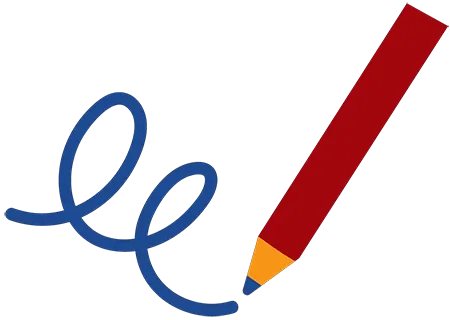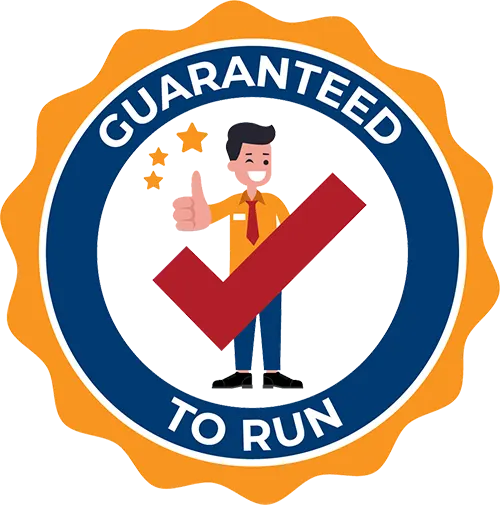
Business Writing That Works Complete
What You'll Learn in Business Writing That Works Complete
Course Length
Learning Objectives
- Learn business writing fundamentals, including several tips to improve writing skills
- Understand the principles of effective business writing and the four types of business communication
- Learn modern business writing rules to make your communication more impactful and relevant
- Master grammar, spelling, and punctuation for professional communication
- Effectively structure sentences and paragraphs using transition words and proper sentence types
- Write clear and concise emails, messages, and letters with reader-focused language
- Leverage tools like Microsoft Word, Copilot, and ChatGPT to enhance your writing
Target Student
This comprehensive two-day course is ideal for anyone in the workplace who communicates with colleagues or clients. Whether you're looking to refine foundational skills or master advanced techniques, you'll learn how to express your ideas effectively and achieve your desired outcomes. Everyone in a business environment can benefit from learning how to communicate clearly, professionally, and confidently.
Course Outline
Strong business writing skills are essential for building trust and credibility with managers, leaders, teammates, clients, and employees. This course equips you with the tools to communicate clearly and confidently, whether you're providing information, persuading an audience, or achieving specific goals.
You’ll learn the fundamentals of professional writing, including crafting concise messages, and focusing on reader-centric communication in this hands-on course. With a mix of practical tips and modern tools like Microsoft Copilot and ChatGPT, you’ll learn to streamline your writing process while maintaining accuracy and professionalism. By the end of this two-day course, you’ll have the confidence to express your ideas persuasively!
Section 1: Business Writing Fundamentals
Complete a “Writing Skills Profile” to determine your current writing skill level and identify areas needing improvement
Learn the power of good business writing
Discuss the principles of good business writing
Understand the four types of business writing and when to use each one
Section 2: Business Writing Framework to Get You Started
Learn about the three Ps of business writing
A step-by-step writing process to take your writing from average to great
Practice the mind mapping technique to create your first outline
Learn ways to overcome writer’s block
Section 3: Learn to Write to Express, Not to Impress
Use simple language that is easy to understand
Three simple steps to eliminate redundancy
Use reader-focused wording to get quicker results
Learn when it is appropriate to use emojis
The Gunning Fog Index – what is your readability level?
Section 4: The Five Cs of Business Writing
Apply the five Cs of business writing to meet the reader’s expectation
Understand how to clearly present evidence or data in a concise way
Use the active voice to keep sentences from becoming too complicated or wordy
Completeness and accuracy in writing prevents communication breakdown and rework
Use a positive tone to be courteous
Section 5: New Business Writing Rules to Enhance Your Writing
Learn new business writing rules and start using them now
Stop using these outdated business phrases
Discover the most and least annoying corporate jargon
Use strong words to enhance your writing
Powerful words to use in your business writing
Section 6: Grammar, Spelling, and Punctuation
A refresher on the parts of speech
Common grammatical errors found in business writing
Discover ways to ensure accurate spelling
Lay the foundation for correct usage of punctuation
Section 7: Sentence Structure and Paragraph Writing
Learn the main parts of a sentence and how to structure one
Discuss the four different sentence types and when to use each
Identify the parts of a paragraph and learn how to draft one
Understand transition words and how to use them in a paragraph
Section 8: Writing Effective Emails, Messages, and Letters
Learn the best practices of email writing, sending professional texts and etiquette
Learn when to use email and when to use collaboration tools (Teams, Slack, Google Chat)
Review the elements of a business letter
Discuss the four most common types of letters and tips to improve your writing
Keep your reader in mind when drafting your email, letter, or other documents
Section 9: Using Technology to Improve Business Writing Skills
Learn about Microsoft Word, the foundation of digital writing
Review Microsoft Copilot features – your AI writing partner
Discuss the difference between free and paid versions of Copilot
Learn how to use Copilot
Review the features of ChatGPT – your personal writing assistant
Discover useful tips for beginners
Section 10: Course Wrap-Up
Capture three takeaways from this course
What will you start doing, stop doing, and continue doing?
Complete a “Writing Action Plan” that you will begin within one week

Delivered by Great Canadian Training

Business Writing That Works Complete
Upcoming Classes
All Public classes are held onlinewith a live instructor
| Dates | Price | Qty |
|---|---|---|
| March 9-10, 2026 9:00 AM to 4:00 PM ET | $1,150.00 Online | |
| May 6-7, 2026 9:00 AM to 4:00 PM ET | $1,150.00 Online | |
| September 10-11, 2026 9:00 AM to 4:00 PM ET | $1,150.00 Online |
Have a Group?
Complete the form to receive a quote for private or customized training.
More people = GREATER savings
All of our courses include
PDF Reference Guide
Take your learning further with a digital Reference Guide you can access anytime. It’s practical, paper-free, and accessible on any device.
After-Training Support
Get 30 days of live 24/7 after-training support via phone, email and online chat to help apply what you've learned
Certificate of Completion
Boost your credentials with a Certificate of Completion, confirming the skills you’ve acquired with us.
Want even more?
Check out our add-ons
Printed Reference Guide
While we love technology, we understand that there is something about having a paper copy. Add a printed reference guide to your training, which we will have shipped to your location.
Extended After-Training Support
Extend your support beyond the standard 30 days for ongoing assistance.
Can I customize my course?
OF COURSE!
Customized to meet your unique needs
We can customize your training to fit your exact needs, whether it's making small adjustments or creating entirely new courses. From setting specific objectives and including your own files to addressing unique challenges, we're here to help. We can even tailor the training to align more closely with how you work and to fit perfectly into your schedule. Our goal is to provide training that's as unique as your goals.
Access to your recorded session for 60 days
You can request your private session be recorded. You can have access for 60 days to revisit what you’ve learned.

